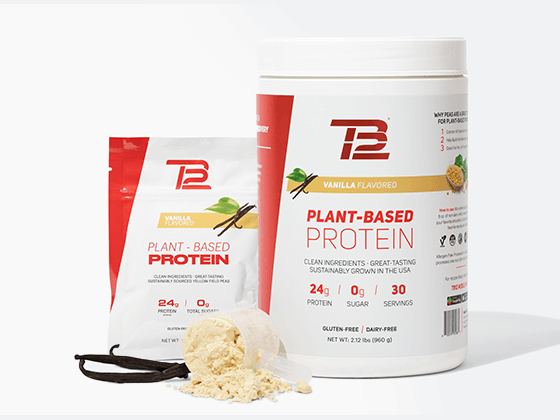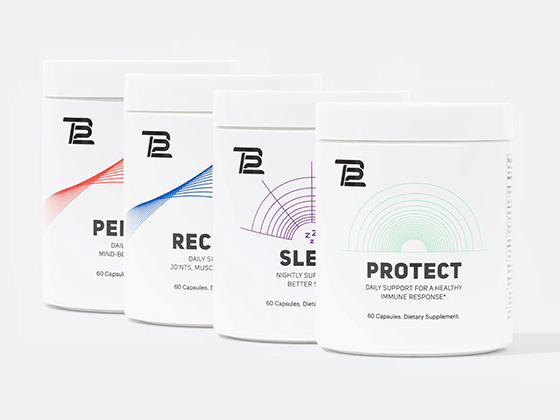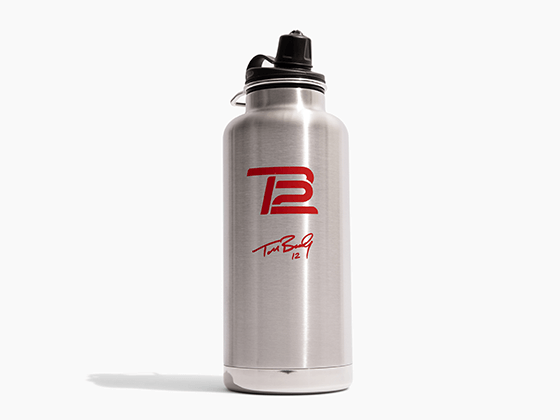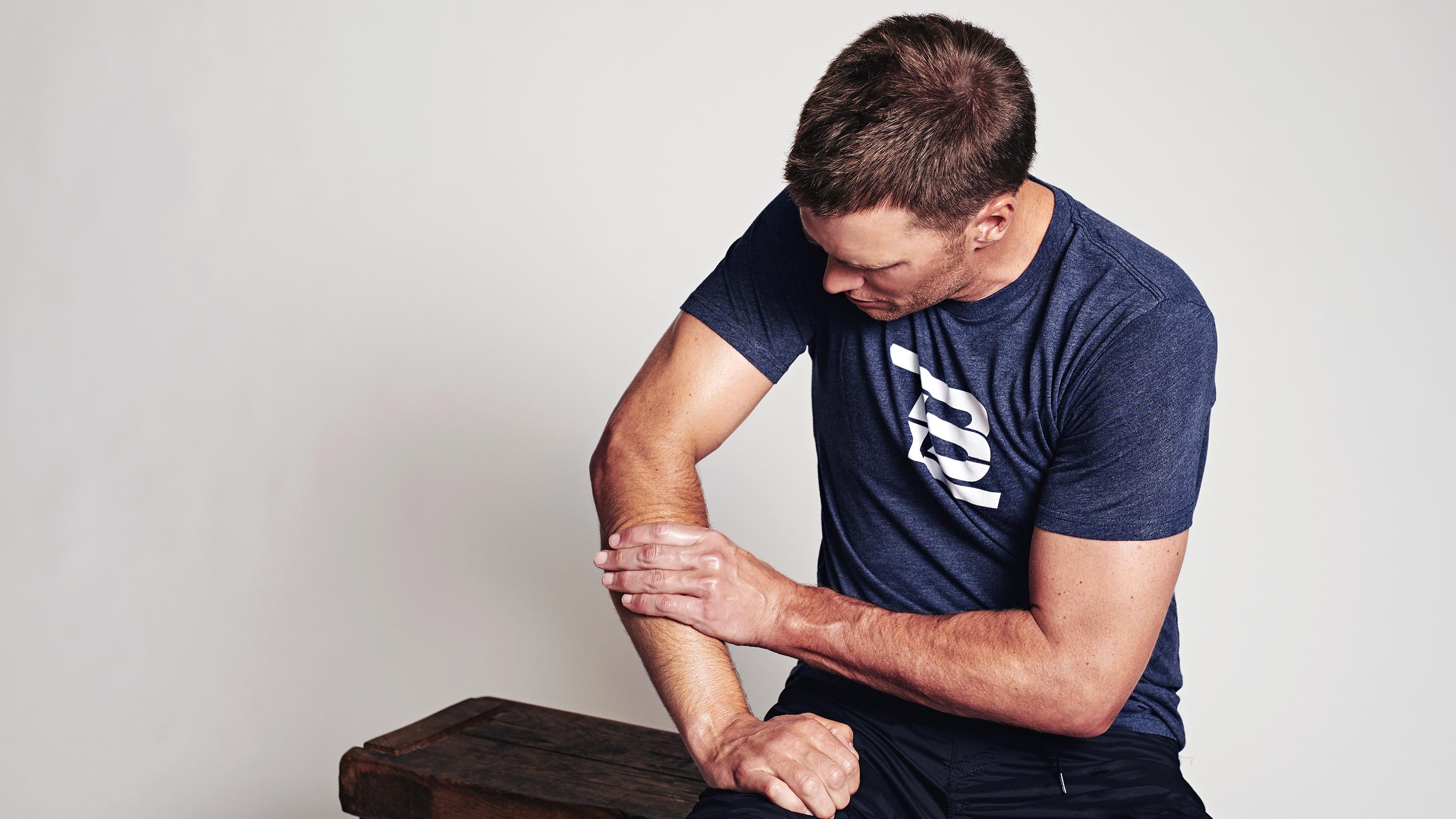TO KEEP YOUR SHOULDERS STRONG without risking an overuse injury in the smaller muscles underneath (rotator cuff), it’s important to build a strong connection between your muscles and your brain. At TB12 we focus on using a mix of deep-force muscle pliability work paired with functional movement. These comprise what we believe are the best shoulder exercises for optimal function and pain-free performance.
What’s in a Shoulder?
The muscles that move your shoulder largely fall into one of two groups: prime movers and stabilizers. Prime movers are what give your shoulders their power, and the stabilizers provide the peripheral forces that guide that power. Think of it like a field goal kick. The stabilizers hold the ball in place, and the prime movers kick it.

In an unbalanced muscular system, sometimes the prime movers and stabilizers start doing each other’s jobs. For instance, if the stabilizers are weak, the prime movers try to pick up the slack, and vice versa. It’s like if everyone in your office switched roles for a day. The accountants are now writing copy, the engineers are leading HR, the copywriters are all sharing the role of VP of sales, and the CEO is going around collecting everyone’s trash. While it might take a few hours for the office to literally burst into flames, the immediate result is inefficiency and inaccuracy.
The same happens with your muscles. A muscular imbalance can hinder your shoulder performance.
To keep the prime movers and stabilizers from doing each other’s jobs, it’s important to keep your stabilizers strong and pain-free with functional, sport-specific exercise.
Best Shoulder Exercises: Functional
Most of the exercises we do at TB12 are done with resistance bands. Here is why:
- They allow for a bigger, more fluid range of motion.
- Resistance can be oriented in any direction, unlike the force of gravity.
- Resistance can be oriented in multiple directions at the same time, which trains stability.
To properly train shoulder stability and increase shoulder performance, try these six exercises below.
01 Single Arm Row with Varied Leg Positions
You can do this exercise with a resistance band (handled or looped) at or just above elbow height.
- Start in a split stance, facing the wall, door, or anchor point.
- Keep your posture upright and your core and glutes contracted.
- Hold one band at elbow height with your arm extended, then bring your arm toward your body tight to your rib cage.
- Continue this motion at a fluid, continuous pace for 20 seconds. Switch to the other side and repeat.
02 Front-Facing Core Angel
For this exercise, you’ll need two resistance bands (handled or looped) in an overhead position.
- With the bands attached high on the wall, face the wall and use both hands to grip both ends of the bands.
- Begin shuffling your feet fast as you raise the bands overhead and lower to your sides.
- Do this for 20 seconds at an accelerated pace.
Band Pull-Aparts
To do this exercise, you’ll only need a looped resistance band.
- Place a looped band in your hands and bring both hands to chest level.
- Pull your arms apart until you reach a “T” position, then return your arms together.
- While maintaining an upright posture, stretch the band across your chest with both arms.
- Do this for twenty seconds.
VARIATION: Repeat the same motion at a faster pace.
04 Resisted Protraction
To do this exercise, you’ll need two looped resistance bands.
- Pull both hands toward your chest while rotating your shoulders until your palms are facing up.
- Then, rotate your shoulders back down until your palms are facing the ground and return your arms to the starting position.
- Repeat this motion continuously.
05 Shoulder row to external rotation
To do this exercise, you’ll need two handled resistance bands.
- Pull both hands toward your chest while rotating your shoulders until your palms are facing up.
- Then, rotate your shoulders back down until your palms are facing the ground and return your arms to the starting position.
- Repeat this motion continuously.
06 Stability ball push-up plank
This exercise is “stability ball plank, push-up position.” To do it, you’ll need a stability ball.
- Get into a push-up position with your hands on a stability ball.
- Keep your arms straight and your feet shoulder-width apart.
- Hold your body stable by maximally contracting your glutes and core.
How You Can Build Pain-Free, Pliable Shoulders
When it comes to considering the best shoulder exercises, your goal is to feel and perform better, the answer isn’t training longer and harder. This classic approach to training leads to overload, imbalance, and injury. The right way to train your shoulders, though not necessarily simple or easy, will allow you to stay healthy and perform your best for longer.
To enhance your shoulder performance, build pliable shoulders by taking these three steps:
- First, give your shoulders what they want: proper hydration, nutrition, and electrolytes.
- Then, go deep. Get pliable at-home using a TB12 Vibrating Roller or TB12 Vibrating Mini Sphere.
- Finally, engage your brain with fast, functional movements that mimic your day-to-day output on the field.
Pliability is the missing link in modern sports training and the core of everything we do at TB12. Pliability complements functional strength and conditioning training to retrain your brain in such a way that your muscles remain long, soft, and primed for movement. Read Train Your Mind — Change Your Brain, which gives more context how pliability affects the connection between your muscles and your brain.







